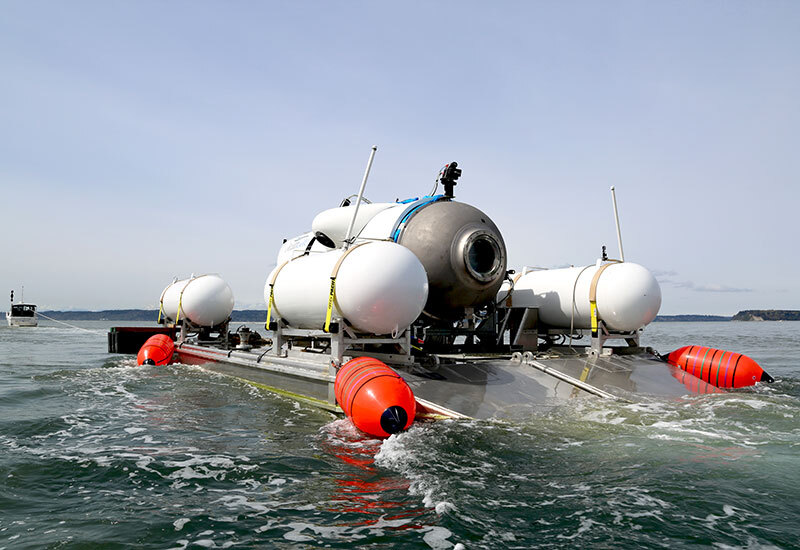
A remotely operated underwater vehicle (ROV) searching for the Titan submersible has discovered a “debris field,” the U.S. Coastguard has said, raising the prospect that rescuers may now be searching in vain.
Scroll to the top for the latest updates.
Update, 1:23 p.m. ET: Sky News reports that friends of the Titan’s passengers have been informed that “a landing frame and a rear cover from the submersible” was found.
BREAKING: Friend of two of the men missing on board the submersible confirms the debris found was “a landing frame and a rear cover from the submersible”, after receiving WhatsApp message live on Sky News.
Latest here: https://t.co/L29qKaj8nR
📺 Sky 501 pic.twitter.com/JtqbuhBG6w
— Sky News (@SkyNews) June 22, 2023
The U.S. Coast Guard is scheduled to hold a press conference at 3:00 p.m. to discuss the findings.
This is a developing story.
***
“A debris field was discovered within the search area,” says the U.S. Coast Guard’s first district command, the body coordinating the rescue mission for the civilian Titan submersible, which went missing on Sunday while diving to the wreck of the RMS Titanic.
The new data of a “debris field” has been passed to experts for analysis, said the USCG.
A debris field was discovered within the search area by an ROV near the Titanic. Experts within the unified command are evaluating the information. 1/2
— USCGNortheast (@USCGNortheast) June 22, 2023
The development will not be a happy one for the now multitude of military and civilian ships, underwater robots, and aircraft patrolling a grid around the last known position of the Titan, as it may support the “implosion” thesis.
When the submarine lost contact on Sunday, it was hoped for a best-case scenario where the craft had lost power but was undamaged, allowing those onboard to survive for days more with the 96-hours of emergency oxygen onboard. Yet if the experimental carbon fibre hull imploded from the immense pressure from the depth of water around the Titanic wreck, it would certainly have killed all aboard.
Hopes were raised this week when sonar buoys surveying the depths detected what was described as banging, which could have been caused by survivors inside the submersible tapping on the hull in the hope of being heard. Yet the USCG later said that after analysis, the sound was likely just “background ocean noise.”
The submersible Titan dived with two members of crew and three passengers in the early hours of Sunday morning and was due to stay underwater on a tour of the wreckage of the RMS Titanic until that afternoon. Approximately an hour and three-quarters into the descent, the vessel lost contact with the surface and the alarm was raised later that day.
An international effort at locating the Titan is underway, with Canadian, U.S., French, and private ships and aircraft assisting with the increasingly urgent effort. Diving robots that can withstand the enormous pressure of the deep water around the Titanic wreck are also in use.
When the Titan departed its mothership, it was carrying approximately 96-hours of emergency oxygen onboard, a reserve which — at estimated usage — would have run out this morning. But as reported, the deadline is hard to accurately pin down as so much is unknown about the state of the craft, the health of those onboard, and how quickly they are consuming oxygen.
See past live update reporting here.
The submergible vessel called the Titan, operated by OceanGate Expeditions, has five people on board and only enough oxygen for up to 96 hours from the time it descends. The 21-foot craft began its descent in the North Atlantic on Sunday to visit the wreck site of the RMS Titanic, but it lost contact with the surface less than two hours later, according to authorities.
OceanGate Expeditions sells seats on the Titan at $250,000 apiece. The vessel was carrying three fee-paying passengers: British billionaire Hamish Harding, Pakistani tycoon Shahzada Dawood and his son Suleman. The other two on board have been identified as Paul-Henri “PH” Nargeolet, a veteran diver and expert on the Titanic wreck, and Stockton Rush, the CEO of OceanGate Expeditions.
The U.S. and Canadian Coast Guards have deployed ships and planes in an intensive search for the Titan, which was attempting to dive to the Titanic wreck site some 400 miles off the coast of Newfoundland, Canada, and 12,000-12,500 ft. below sea level. The rescuers have deployed two camera-equipped remote-operated robots that can scan the seafloor in real-time at depths other vessels can’t reach.
The depth of such a dive makes rescue efforts especially difficult because very few vessels are able to travel to that depth. On top of that, the choppy waters of the North Atlantic are prone to heavy fog and storms, making even an aerial search of the surface challenging.
Coast Guard Captain Jamie Frederick told reporters on Wednesday that the rescue efforts are covering an area over two-times the size of the state of Connecticut in waters two and a half miles deep.
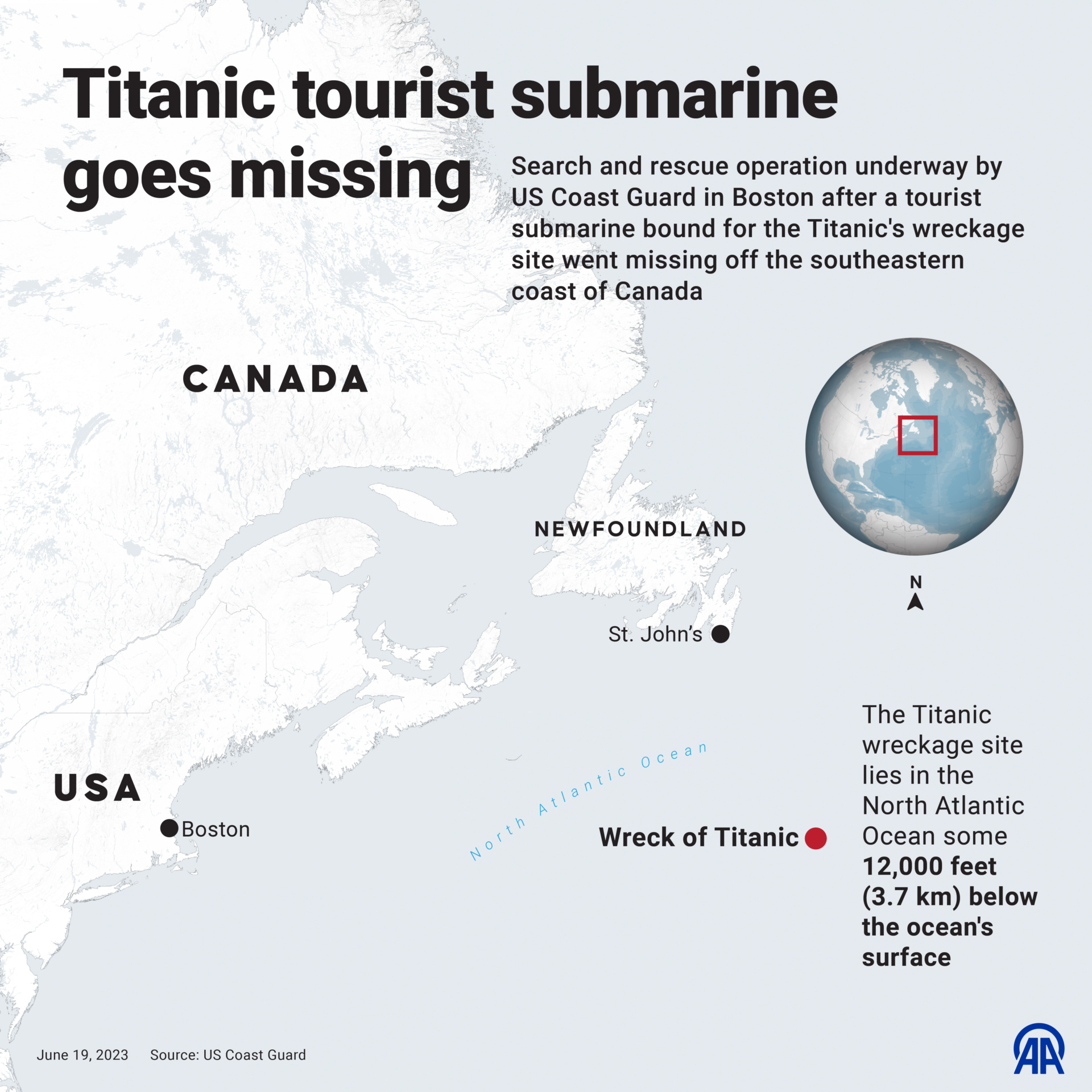
Map of the search and rescue operation underway by the U.S. Coast Guard for the Titan tourist sub. (Yasin Demirci/Anadolu Agency via Getty Images)
On Wednesday, a Canadian military surveillance aircraft detected underwater noises that have been described as “banging noises.” The Coast Guard wrote on Twitter that a Canadian P-3 Orion had “detected underwater noises in the search area.” Searchers then moved an underwater robot to that area to search. In his press conference on Wednesday, Coast Guard Captain Frederick said they could not be certain the noises were coming from the missing vessel.
“We don’t know what they are, to be frank,” he said, but added that the noises may help the rescue teams narrow their search.
OceanGate Expeditions is also under increased scrutiny as documents show that the company had been warned there might be catastrophic safety problems posed by the way the experimental vessel was developed. David Lochridge, OceanGate’s director of marine operations, said in a 2018 lawsuit that the company’s testing and certification was insufficient and would “subject passengers to potential extreme danger in an experimental submersible.”
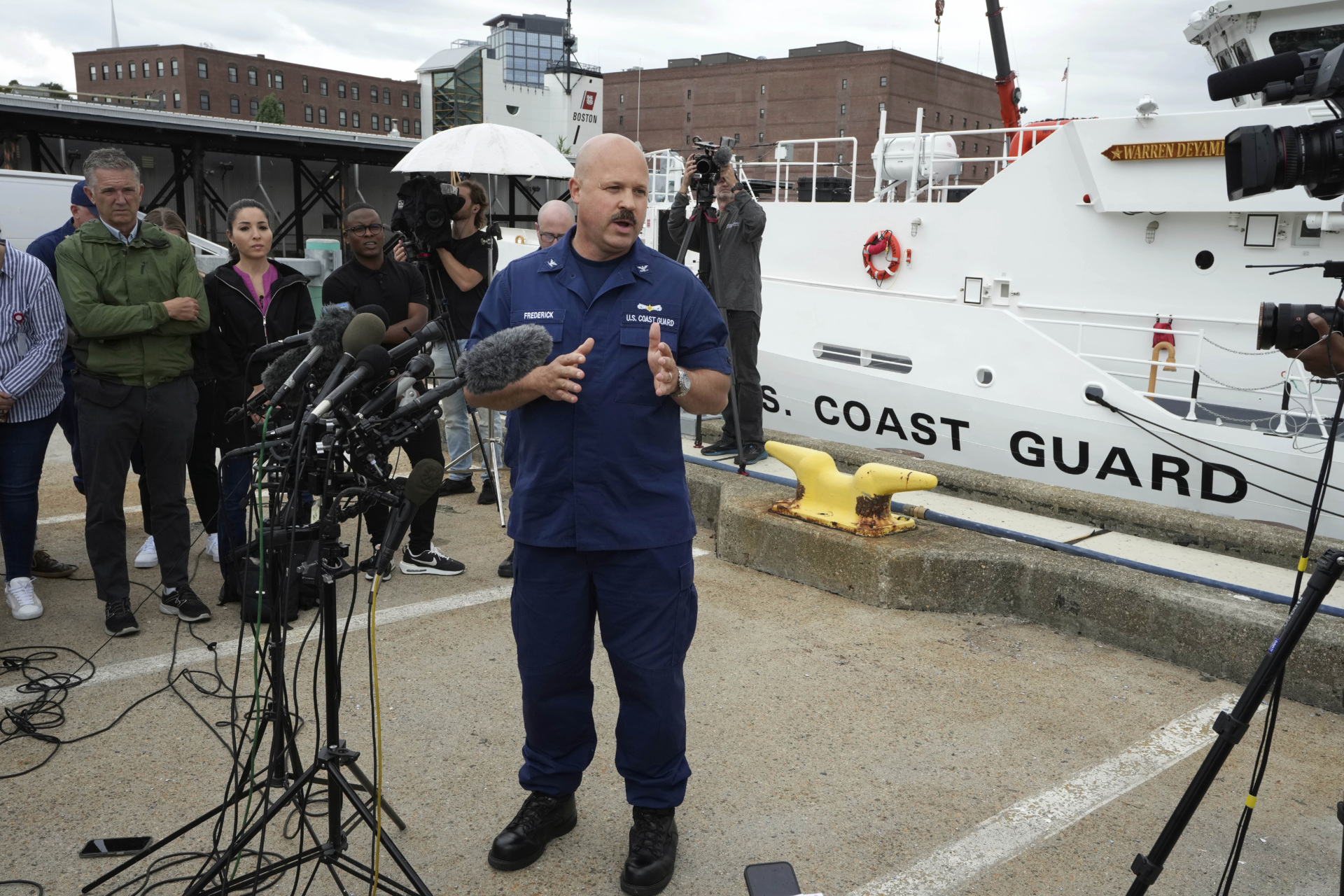
U.S. Coast Guard Capt. Jamie Frederick, center, faces reporters during a news conference, Tuesday, June 20, 2023, at Coast Guard Base Boston about the search for the missing submersible near the wreck of the Titanic. (AP Photo/Steven Senne)
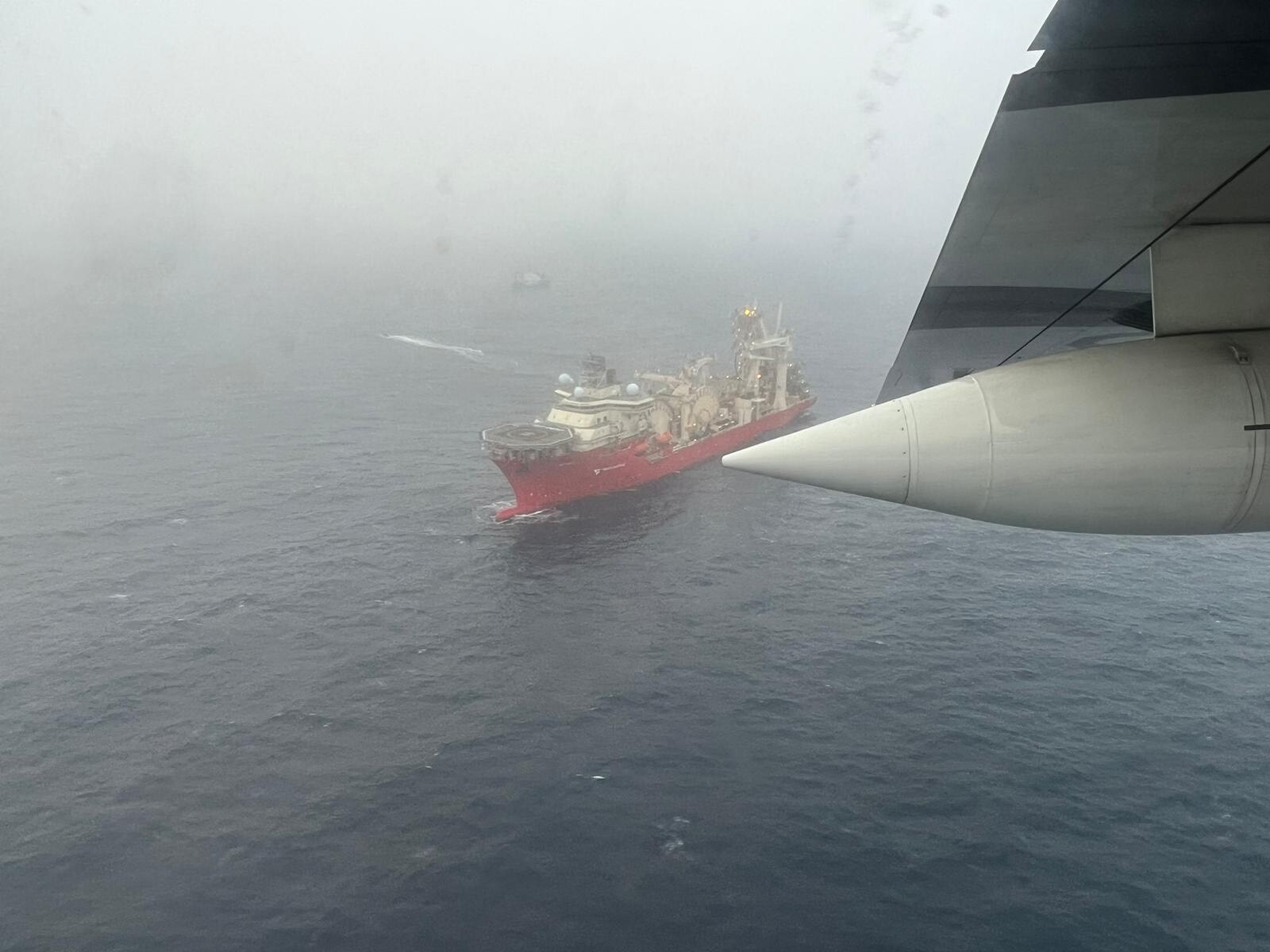
An aerial view of the Bahamian research vessel Deep Energy ship after it was arrived in the area for OceanGate Titan submersible search. (U.S. Coast Guard via Getty Images)
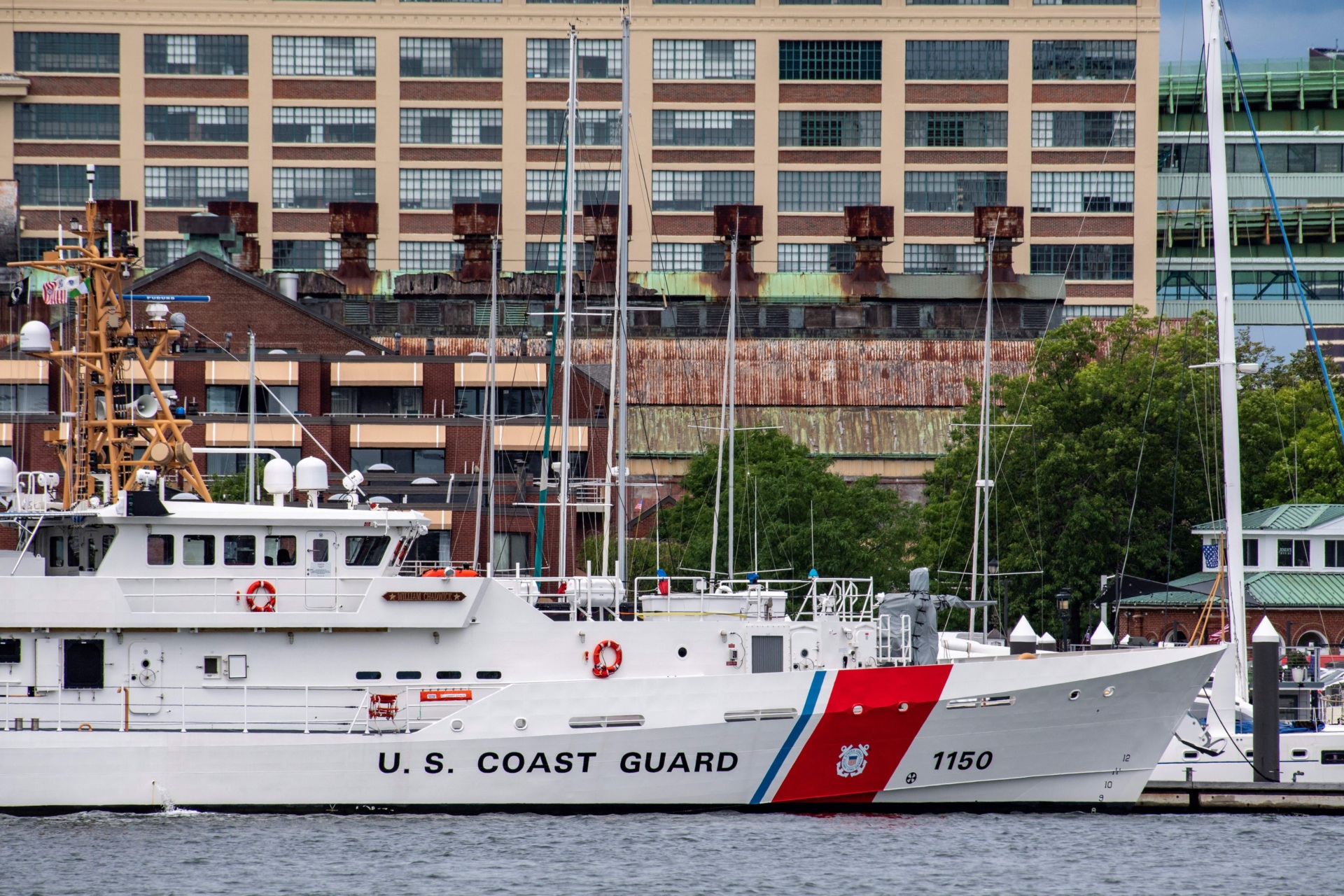
A U.S. Coast Guard vessel sits in port in Boston Harbor across from the U.S. Coast Guard Station Boston on June 19, 2023. (Joseph Prezioso/AFP via Getty Images)
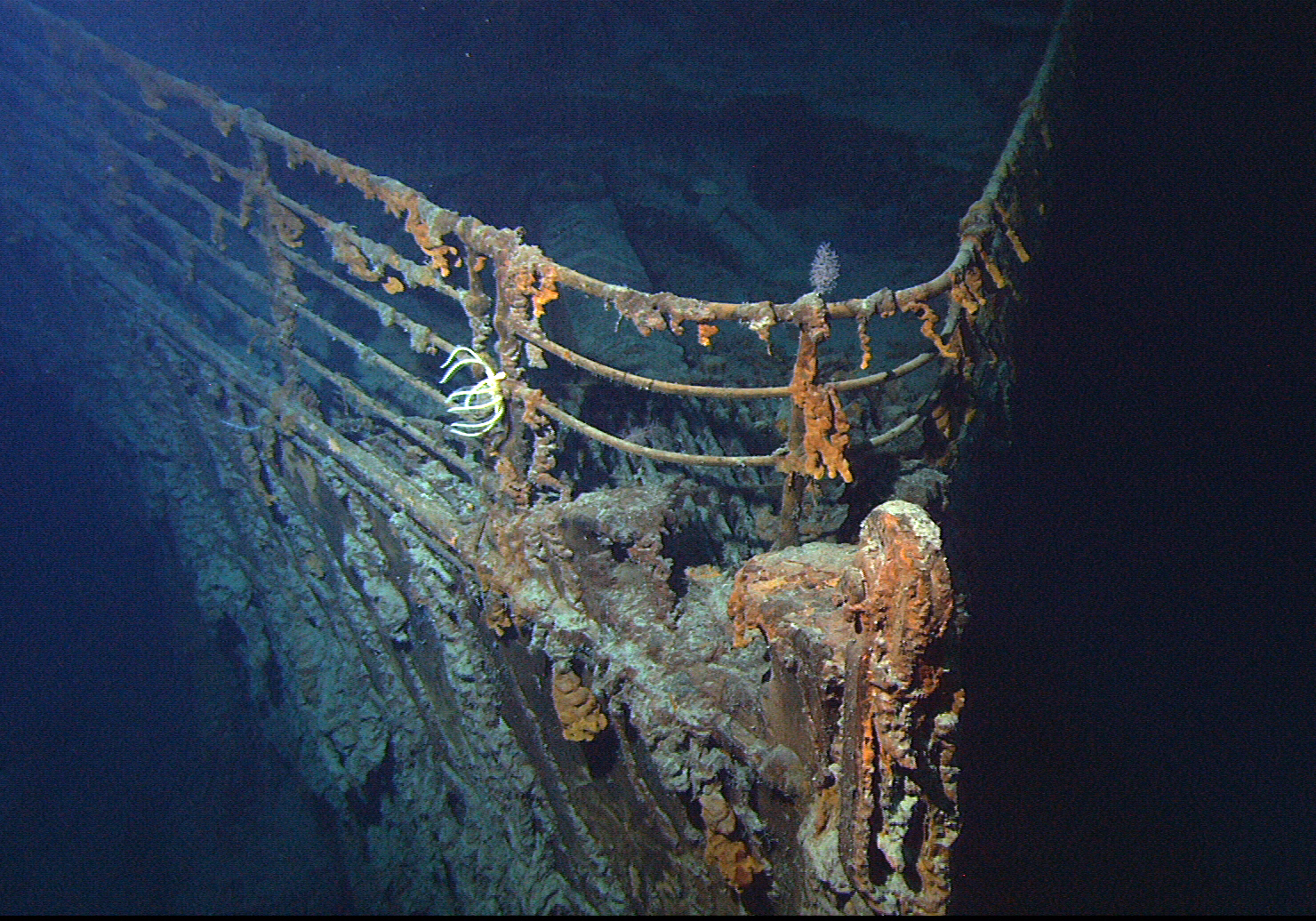
View of the bow of the RMS Titanic photographed in June 2004 by the ROV Hercules during an expedition returning to the shipwreck of the Titanic. (Courtesy of NOAA/Institute for Exploration/University of Rhode Island)
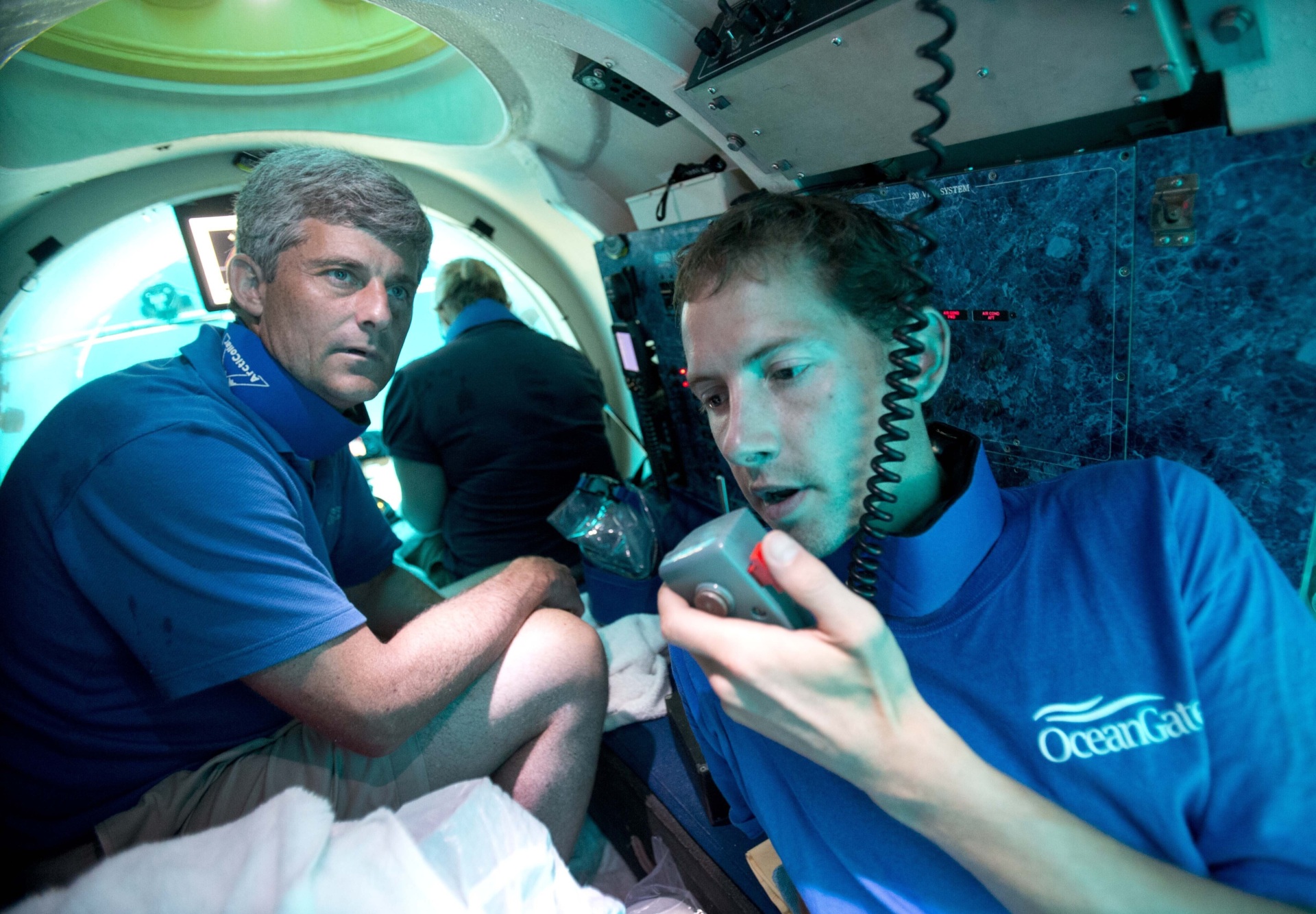
Submersible pilot Randy Holt, right, communicates with the support boat as he and Stockton Rush, left, CEO and Co-Founder of OceanGate, dive in the company’s submersible, “Antipodes,” about three miles off the coast of Fort Lauderdale, Florida, on June 28, 2013. (AP Photo/Wilfredo Lee, File)
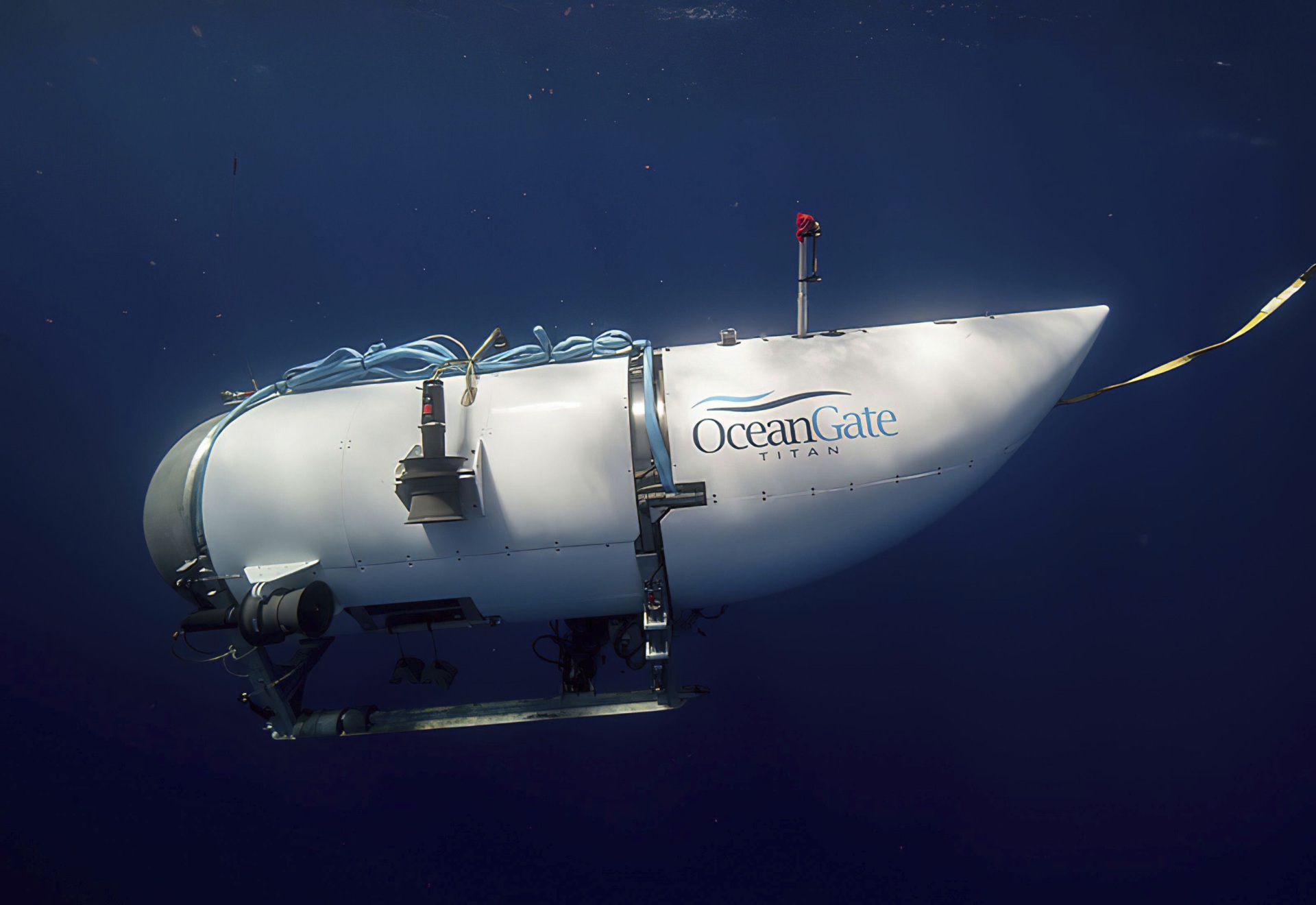
This photo provided by OceanGate Expeditions shows a submersible vessel named Titan used to visit the wreckage site of the Titanic. (OceanGate Expeditions via AP)
Former passengers on OceanGate’s Titan submersible have also come forward with their own harrowing stories about difficulties experienced in past dives.
Mexican actor Alan Estrada shared disturbing details in a YouTube video about his own trip on the Titan during a July 2022 tour to the Titanic wreck, during which the sub’s batteries drained quickly and the trip was cut short, the UK Daily Mail reports.
“For safety reasons this is completely understandable when the last battery—the submersible has two batteries—when the second battery has only 40 percent left, it is necessary to return to the surface for safety,” Estrada said. “This means that the four hours that they tell you that you are going to be down there are not fulfilled.”
Estrada also said that Titan experienced communication difficulties during his trip when the sub lost contact with the surface for a period of time.
“After 1,000 meters Scott, the pilot, detects a failure in his communication system,” Estrada explained. “It is vital that we cannot communicate with the surface, otherwise we can get lost and drift in the middle of the ocean.”
After descending to about 21,000 feet, the sub pilot on Estrada’s expedition released the ballast tanks from each side of the vessel in order to floated back to the surface. They regained communication at some point along the way.
Time’s Up: Titanic Sub Past 96-Hour Mark, Coastguard Says ‘Banging’ Noise is Just the Sea https://t.co/4xJ2hwiEN5
— Breitbart London (@BreitbartLondon) June 22, 2023








